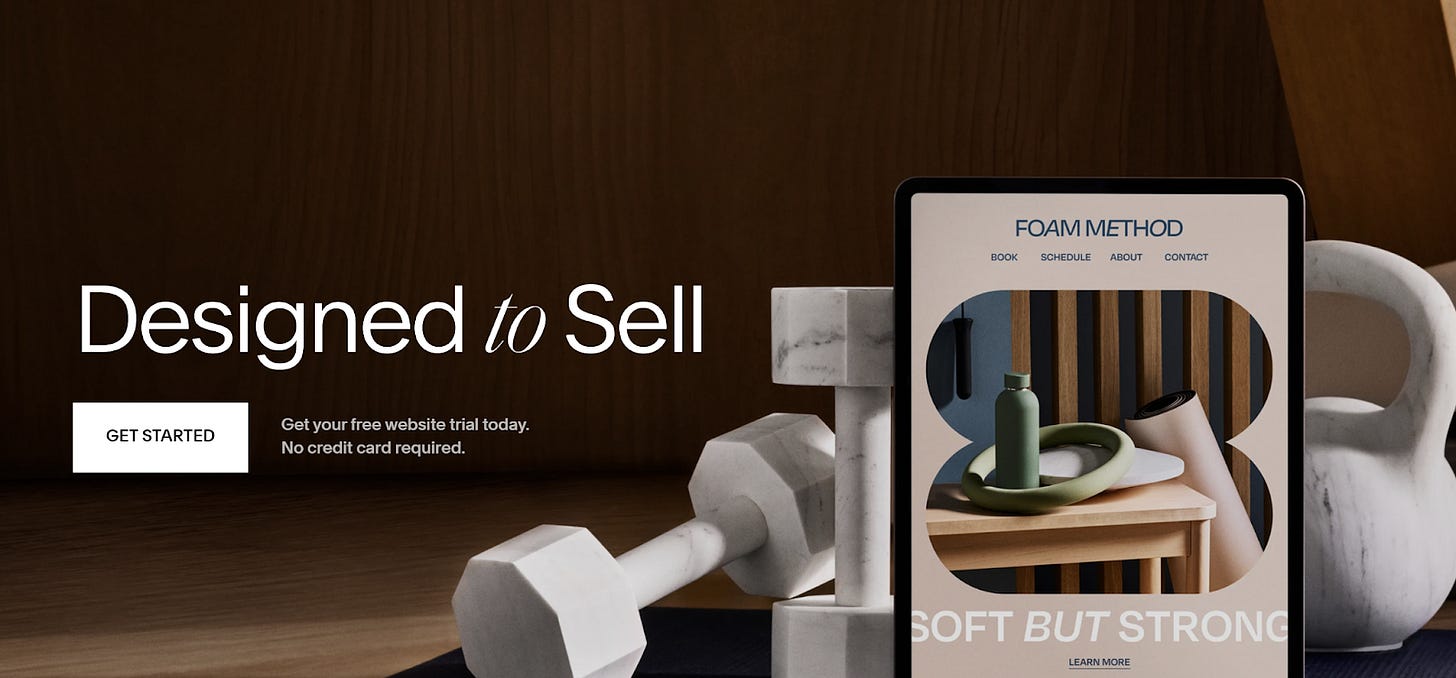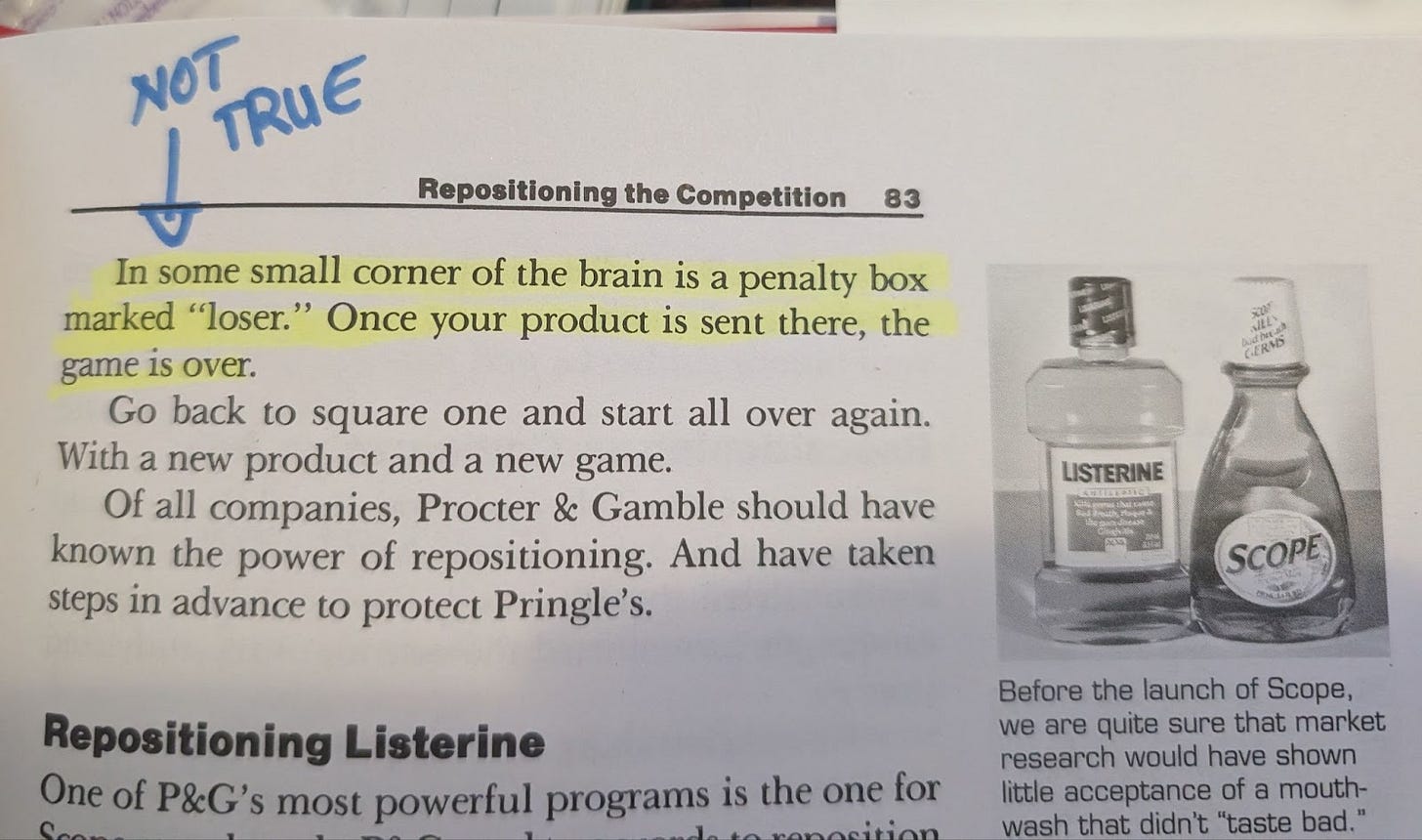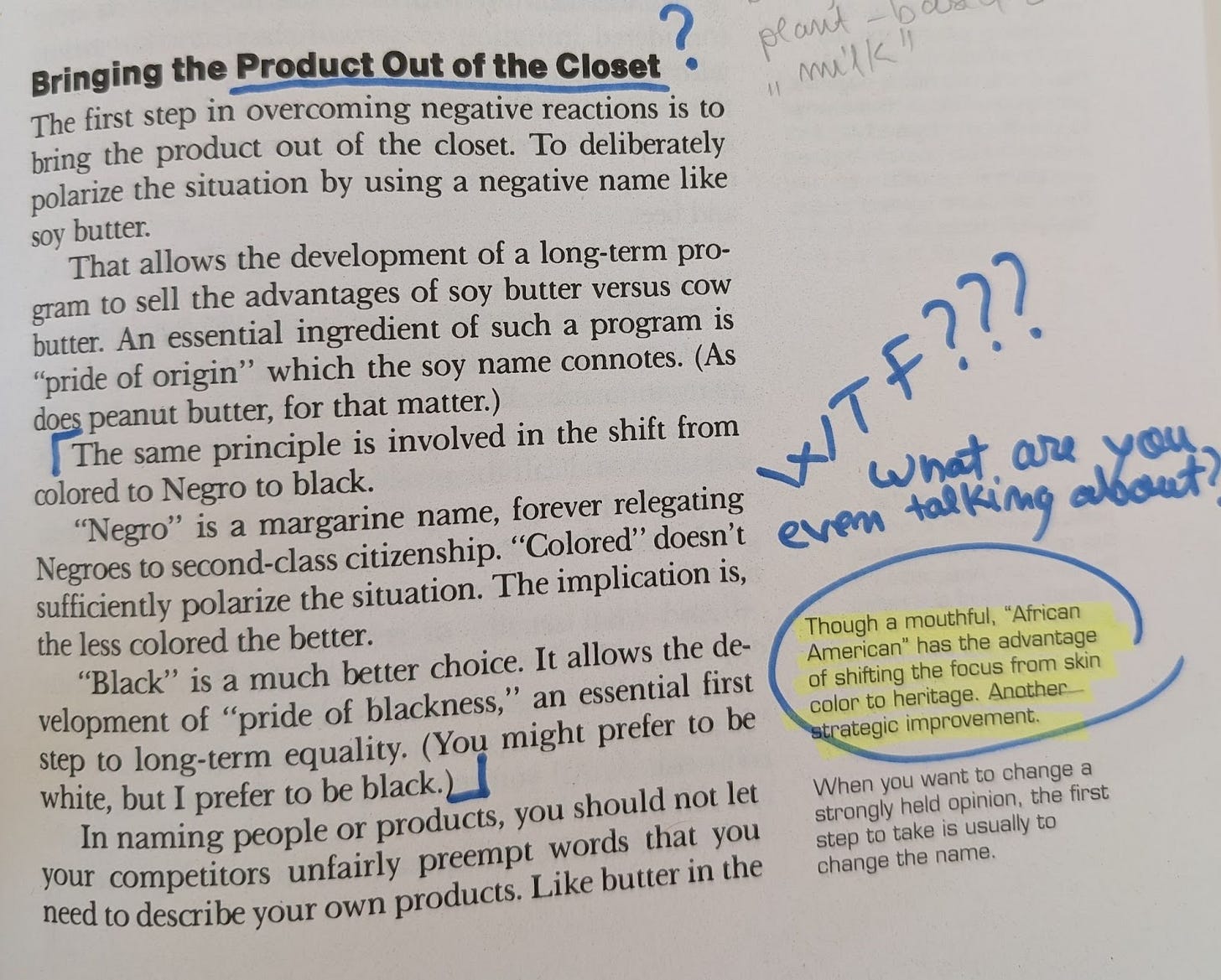Positioning and messaging through the crooked lens of Al Ries and Jack Trout
A critical deep dive into Positioning: The Battle for Your Mind (the 20th anniversary edition with comments by the authors)
I found this book recommended all over LinkedIn and Reddit, by users swearing this is such a golden nugget of PMM knowledge. Spoiler alert: It’s not. When it was first published (in the freaking 80s), it may have been groundbreaking. Today? Not so much.
The main ideas are obvious, outdated, disproven, or problematic
I’ve selected and dissected a few core ideas from the first half of the book below.
We live in an overly communicative world, as people are exposed to a lot of information
While stating the obvious truth, this is the main premise of the book and the reason why positioning is introduced as a new approach to product marketing.
This is one of the few points that still stands today. Actually, it’s truer in 2025 than it was in the 80s. The authors got this one right!

Oversimplified messaging focused on the prospect’s benefit is necessary
To avoid becoming part of the informational noise, product marketers need to keep messaging simple and focused on what’s in it for the prospect, not how great the product is.
“[...] get off your pedestal [...] get on the same wavelength as the prospect.”
“[...] concentrate on the receiving end [...] on the perceptions of the prospect. Not the reality of the product.”
Of course, any marketer already knows this. I’m sure this was a revolutionary idea back in the day. Now is just the standard we are all following (or should be anyway) when writing copy and content.
While they’re at it, PMMs need to simplify their message and then simplify some more. Basically, they should sneakily assume their audience is below their level of intelligence and be deliberately simple.
“In advertising, dignity as well as pride goeth before destruction, and a haughty spirit before a fall.”
Looks like the authors can’t take their own advice.
Positioning is about finding and claiming empty slots in the prospect’s mind
For someone who is just getting started with PMM, the first pages of the book explaining what positioning is with creative analogies and real-life examples were really captivating. What came next was disturbing. But for now, let’s get into what positioning is, as defined by its founding fathers, Al Ries and Jack Trout.
Positioning is finding an angle that’s not used by the competition, so you can build a product perception from scratch, just the way you want to.
For me, it was useful to imagine positioning as a way to model the image of a product into a unique shape that can fit a specific empty space in the prospect’s mind, like a jigsaw puzzle piece.

But to find that perfect angle, you may think you’d have to test a few ideas first, no? Wrong!
“You never get a second chance to make a first impression”
The authors advise you to hold on to any communication until “you’re ready to position yourself for the long term.” How are you supposed to do that without testing your angle on actual customers, you ask? That’s irrelevant because “You never get a second chance to make a first impression.”
Guys, someone needs to tell Squarespace. They kept changing their positioning and messaging over the years. And their growth proves this immutable law of ‘holding off until you have it’ just doesn’t hold.
Their messaging was pretty consistent from 2014 through 2018. In 2019, they tapped into the reason why people want a personal website in the first place: to bring ideas to life.
This message appeals to anyone who wants to start selling services and products, as well as to those who simply want to publish that magazine-style blog or build a portfolio. It covers both business ideas and personal aspirations. Beautiful work!
But then, in 2019, Squarespace changed the messaging again, positioning the platform as an e-commerce engine for entrepreneurs.
They continued down that path in 2023 with another e-commerce-focused iteration.
Only to change their mind again in 2025 and go back to their more inclusive messaging.
‼️ This timeline might be a bit janky, as I used web.archive.org to go through these iterations.
The point is, it’s ok to change your mind. Successful businesses do it all the time.
If you do decide to wait for your eureka moment, you can’t wait for long. Because…
“It’s better to be first than it is to be better”
There I was, believing what I’ve read a few pages ago about how positioning is about “[...] finding holes in the marketplace. [...] Not to create something new and different, but to manipulate something already up there in the mind.”
Well, esteemed authors, how the hell is my product going to be the first in a category/niche if the goal is not to create something different but to manipulate what’s already in the mind of my prospect?
This book gets confusing and contradictory. It makes bold, confident statements that the readers should accept as truths, only to dismantle them in the next chapters.
“[...] it’s best to have the best product in your particular field. But it’s even better to be first.”
“Second can also be successful. Consider those that challenged leaders: Crest vs. Colgate.”
Aha! So, there is no need to rush a product to market just to be first? Yes, but there’s a caveat:
“To put a new brand into the mind, you have to delete or reposition the old brand that already occupies the category.”
The book treats categories like a single folder that can only hold one file with that name. In reality, today’s categories are more like cloud storage, with multiple versions coexisting, organized by different attributes (price, audience, use case).
We have a lot of no-code website builders to choose from, yes. But they are not doing the same things and will not all appeal entirely to the same audiences. An oversimplification, just to prove the point:
Webflow: web-designer–focused
Wix: tech-averse Joe who prioritizes simple over cheap
WordPress: tech-enthusiast Joe on a budget
All these products appeal to a segment within a category. Sure, these segments can overlap at some point, but the competition is not as vicious as the book makes it look. You can’t sell Webflow to tech-averse Joe.
Today, differentiation happens through segmentation, not absolute dominance.
There are still categories where products are practically indistinguishable, such as ride-sharing apps, food delivery, airlines, etc. In these cases, positioning doesn’t necessarily decide the winner.
Most people I know (myself included) open at least two ride apps before booking. Which proves that Ries & Trout’s ‘one slot in the mind’ model just doesn’t hold: we happily keep multiple options in mind and choose based on situational factors.
The whole book is like this. I’ll spare you. It just gets more repetitive and annoying. Speaking of nuisances…
How is nobody talking about this? I’m starting to think nobody really read the book
🚨 Let’s start with word choice.
🚨 There are a lot of unfulfilled prophecies that were corrected through side comments, but left inside the book. I imagine if you take all of these out, you’ll lose quite a few pages.
🚨Pseudo-scientific claims on how the human mind works.
🚨Framing deceptive ideas as innovative positioning angles.
Something tells me that people who came up with “almond milk” have read this book. As we all know, that didn’t go so well, and now there are legal limitations on how you can name vegan dairy alternatives.
🚨Of all the examples they could use…they chose to talk about these
Why I don’t recommend reading this book
Examples are outdated. No talk about other marketing channels other than print advertising. Quite often, factually incorrect. Not to mention how reductive and even offensive things get at some point.
Sure, you can get some useful learnings from it, but to do that, you’d have to read through repetitive ideas and not get distracted by the commentary on the side of the pages.
A company failed?
It’s surely because of their latest advertisement in the newspaper. Nothing else could lead to this. It all comes down to positioning and messaging; anything else cannot make a business fail. I’m sorry, what?
It’s not a pleasant reading experience as learning anything from this book requires you to do your research on the side to ensure you’re not feeding your mind with anecdotal claims or disproven psychological “facts”.
The most concerning thing is that this book got a once-over in the 2000s, and most of the problematic language has been left there. This makes me think that the anniversary edition was just a quick and lazy cash grab, without any significant info actualization or editorial responsibility. The authors slapped some commentary in there and called it a day.
More than anything, this has historical significance for product marketing, as the authors were the first to put a name to positioning. Aside from that, there’s not much value left in this book. Oh, maybe just the aesthetic value it carries. I admit, this is a beautiful book once you remove the dust cover.
There’s so much wrong here, it could keep a whole series busy.
For now, I don’t have a recommendation on what to read instead. But I know this is NOT the book for learning about positioning in 2025.
I’d love to hear what book you think deserves the modern crown of positioning.












